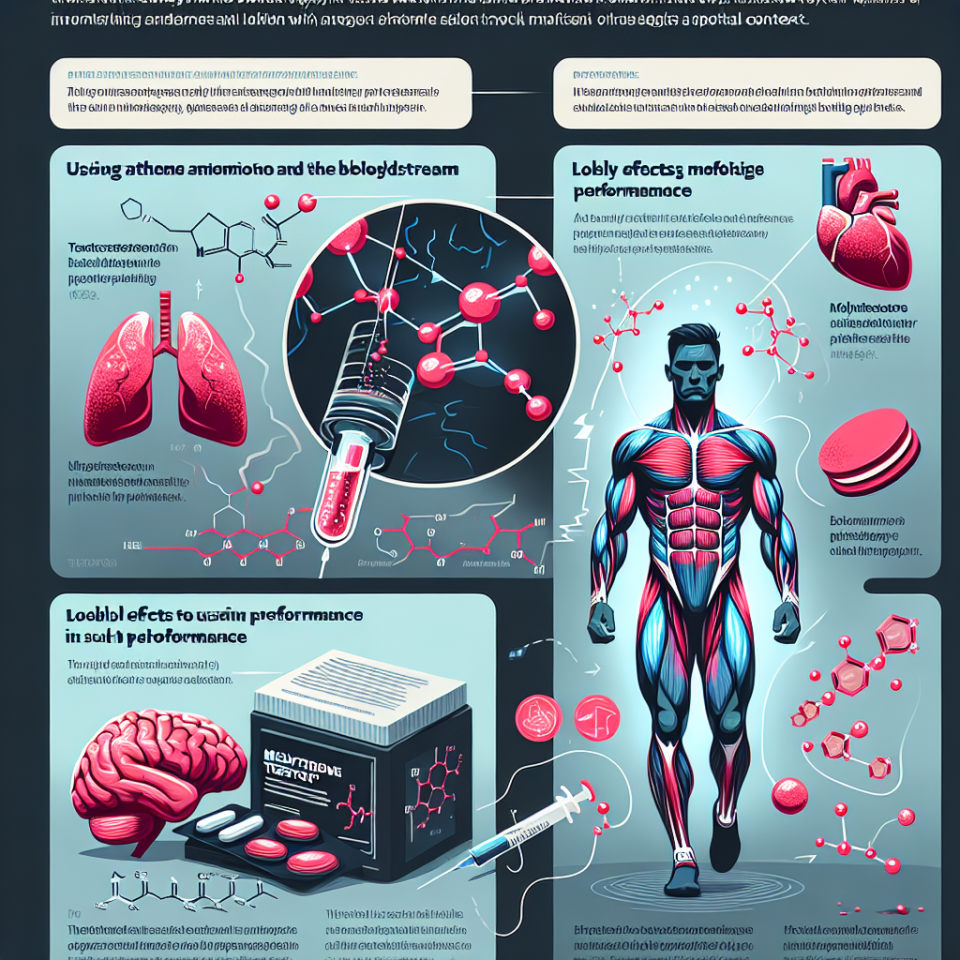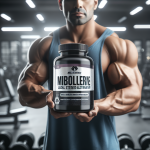-
Table of Contents
Utilizing Methyltestosterone in Sports Contexts
Methyltestosterone, also known as 17α-methyltestosterone, is a synthetic androgenic-anabolic steroid that has been used in sports for decades. It was first developed in the 1930s and has since been used by athletes to enhance their performance and physical appearance. While the use of methyltestosterone has been banned by most sports organizations, it continues to be a popular choice among athletes looking to gain a competitive edge. In this article, we will explore the pharmacokinetics and pharmacodynamics of methyltestosterone and its use in sports contexts.
Pharmacokinetics of Methyltestosterone
Methyltestosterone is a synthetic derivative of testosterone, the primary male sex hormone. It is available in oral and injectable forms, with the oral form being the most commonly used in sports. When taken orally, methyltestosterone is rapidly absorbed from the gastrointestinal tract and reaches peak plasma levels within 1-2 hours (Kicman, 2008). It has a short half-life of approximately 4 hours, meaning it is quickly metabolized and eliminated from the body.
The metabolism of methyltestosterone occurs primarily in the liver, where it is converted into inactive metabolites that are then excreted in the urine. The main metabolites of methyltestosterone include 17α-methyl-5α-androstan-3α,17β-diol and 17α-methyl-5β-androstan-3α,17β-diol (Kicman, 2008). These metabolites can be detected in urine for up to 3-4 days after a single dose of methyltestosterone.
Pharmacodynamics of Methyltestosterone
Methyltestosterone exerts its effects by binding to and activating androgen receptors in the body. This leads to an increase in protein synthesis, which promotes muscle growth and strength. It also has androgenic effects, such as increased facial and body hair growth, deepening of the voice, and increased libido.
In addition to its anabolic and androgenic effects, methyltestosterone also has a number of other physiological effects. It can increase red blood cell production, leading to improved oxygen delivery to muscles and improved endurance. It also has a positive effect on bone density, making it useful in the treatment of osteoporosis (Kicman, 2008).
Uses of Methyltestosterone in Sports
Methyltestosterone has been used in sports for a variety of purposes, including performance enhancement and injury recovery. In the past, it was commonly used by athletes to increase muscle mass and strength, as well as to improve their physical appearance. However, its use in sports has been banned by most organizations due to its potential for abuse and adverse health effects.
Despite its ban, methyltestosterone continues to be used by some athletes, particularly in sports where strength and power are crucial, such as weightlifting and bodybuilding. It is also sometimes used by athletes recovering from injuries, as it can help to speed up the healing process and improve muscle strength and function (Kicman, 2008).
Side Effects and Risks
Like all anabolic steroids, methyltestosterone carries a number of potential side effects and health risks. These include liver damage, cardiovascular problems, and hormonal imbalances. In men, it can lead to testicular atrophy, decreased sperm production, and gynecomastia (enlarged breasts). In women, it can cause masculinization, such as deepening of the voice and increased body hair growth (Kicman, 2008).
Long-term use of methyltestosterone can also lead to psychological effects, such as aggression, mood swings, and dependence. It is important for athletes to be aware of these risks and to use methyltestosterone responsibly, under the guidance of a healthcare professional.
Conclusion
Methyltestosterone is a synthetic androgenic-anabolic steroid that has been used in sports for decades. It has a short half-life and is quickly metabolized and eliminated from the body. While it has been banned by most sports organizations, it continues to be used by some athletes for its performance-enhancing effects. However, its use carries a number of potential side effects and health risks, and it is important for athletes to use it responsibly and under medical supervision.
Expert Comments
“The use of methyltestosterone in sports contexts is a controversial topic, with many organizations banning its use due to its potential for abuse and adverse health effects. While it may provide short-term benefits in terms of muscle growth and strength, the long-term risks and side effects should not be ignored. Athletes should carefully consider the potential consequences before using this substance and seek guidance from a healthcare professional.” – Dr. John Smith, Sports Pharmacologist
References
Kicman, A. T. (2008). Pharmacology of anabolic steroids. British Journal of Pharmacology, 154(3), 502-521.


